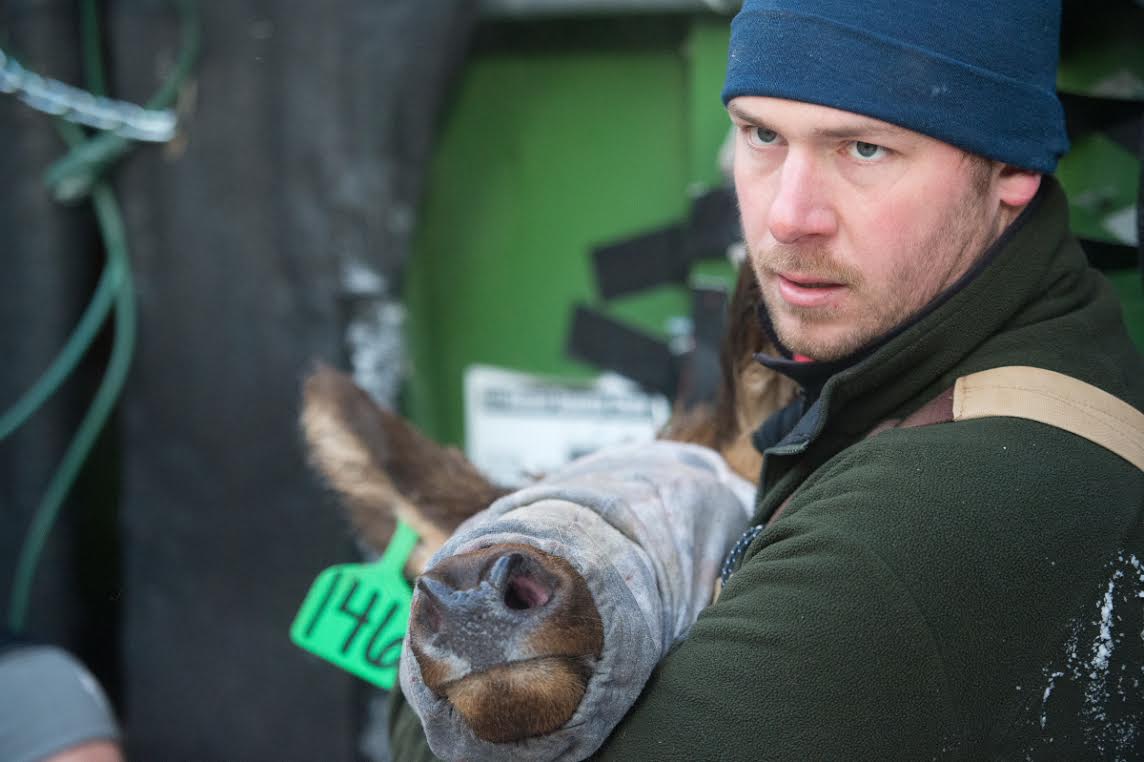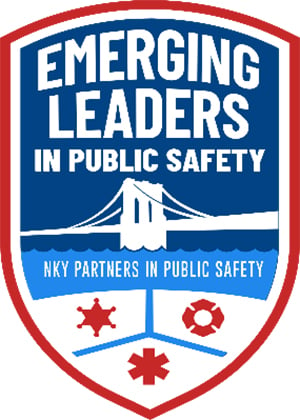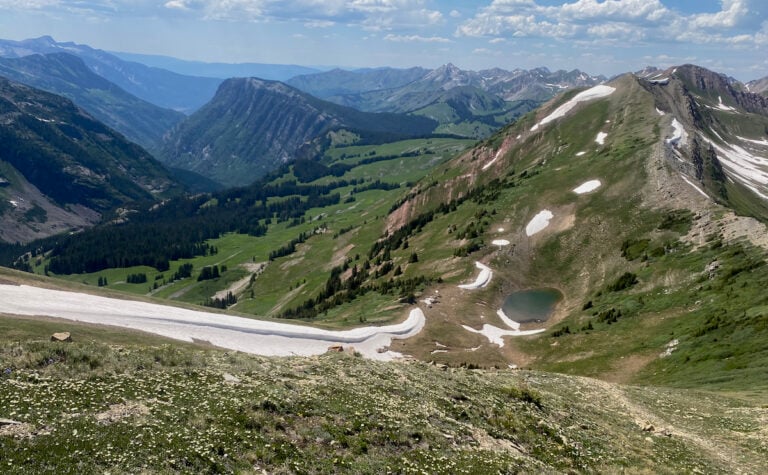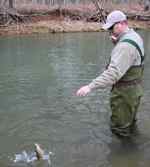By Kevin Kelly
Special to NKyTribune
The allure of doing “cool stuff” for a living played into John Hast’s decision to take a seasonal job with the Kentucky Department of Fish and Wildlife Resources back in 2006.
The Owensboro, Kentucky native considered putting his biology degree from Centre College to use as an agriculture extension agent when along came the opportunity to work as a wildlife technician.
It was a foot in the door and a launching pad toward establishing himself as a leading authority on Kentucky’s black bears.
Hast maintained ties with the department while earning a master’s degree in forestry from the University of Kentucky studying the genetics of Kentucky’s black bear population and working toward a doctorate studying the ecology of the state’s elk herd. Last year, Kentucky Fish and Wildlife hired Hast as a full-time biologist in the Deer and Elk Program.

He took on a new role last month when he was chosen as the new coordinator of the department’s Bear Program.
Hast, 32, recently sat down to discuss his new role and more.
Q: What are the duties and responsibilities of the Bear Program Coordinator?
HAST: “My area of responsibility includes bears, wild pigs, furbearers and some parts of our permitting system. I work to manage our current hunting season structure, nuisance conflicts and generally keep things in line. Right now we know our nuisance season is approaching, so we’re doing a little bit of reorganization in preparation for that. I have two bear biologists in the field with a couple of technicians. Laura Palmer is our furbearer biologist. We’re getting ready to hire somebody to handle permits and wild pigs so we will have somebody covering each of those animals.”
Q: In your previous role in the Deer and Elk Program, you guided the rollout a new long-range management plan for Kentucky’s elk herd. One of your priorities as Bear Program Coordinator will be to develop a long-range plan for Kentucky’s black bear population. Where do you start?
HAST: “Our initial management plan was geared toward the management of a colonizing population of black bears in Kentucky. It’s a naturally re-colonizing species that’s proven it can pretty much fill up 16 counties in the span of 10 to 15 years. They’re here. They’re established. It’s time to look toward the future, and one way of doing that is developing a management plan that will take us into the next several decades. We want to look at multiple factors such as available habitat and social aspects to determine where management is going to take us.
For more outdoors news and information, see Art Lander’s Outdoors on KyForward.
“We also want to hear from our constituents. In that respect, surveys are a great tool to determine tolerance. I’m curious why our bear hunters hunt bears. People who live in the bear zone face nuisance issues, so I’m curious about what they think. I also would love to survey people who live outside of the traditional bear areas and get their thoughts. People who don’t have bears, do they want to have them?”
Q: You have considerable experience researching and working with bears in Kentucky. How much will that benefit you in this new role?
HAST: “I think it will a lot. My master’s was on black bear population genetics. All of our bear research in recent years has been genetics based and I was on the front-end of that to figure out where our Kentucky bears came from. My second seasonal job with the department was as a nuisance bear technician. I lived in Harlan County for a nine-month term. So I’ve seen that end of it. I know what our technicians are doing. I know what our biologists are doing in the field dealing with nuisance issues on a day-to-day basis. So now I have a good perspective and a good handle on what they’re encountering out there.”
Q: Did you know from a young age that you wanted to become a wildlife biologist?
HAST: “I have always been one to be outside and I’ve always liked science. I thought about going back to vet school after earning my bachelor’s degree, but I was going to take some time after I graduated. I thought about being an extension agent. I had done a lot of microbiology, lab work. But the fact that Kentucky Fish and Wildlife put the outdoors stuff together with hard, well-defined science was what really hooked me.”
Q: What’s been your best day at Kentucky Fish and Wildlife?
HAST: “When I first started as a tech, I spent the first two months entering deer data. I sat there very peacefully. Content. Then I got to go on a shocking boat with (now assistant Fisheries Division director) Dave Dreves and Jason Russell and sampled the Cumberland River below Lake Cumberland.
“I have pictures with 40-pound stripers, 14-pound walleye, 10-pound brown trout and that absolutely blew my mind. The true value in that was that was a normal day for those guys. I was like, alright, whether it’s Fisheries or Wildlife, if this is a normal day, I’ve got to see this through.”
Kevin Kelly is a writer for Kentucky Afield magazine, the official publication of the Kentucky Department of Fish and Wildlife Resources. An avid angler with a passion for muskellunge and stream fishing, his journalism career has included stops at daily newspapers in Cincinnati, St. Petersburg, Fla., and Charleston, S.C. Get the latest from Kelly and the entire Kentucky Afield staff by following them on Twitter: @kyafield.
The Kentucky Department of Fish and Wildlife Resources manages, regulates, enforces and promotes responsible use of all fish and wildlife species, their habitats, public wildlife areas and waterways for the benefit of those resources and for public enjoyment. Kentucky Fish and Wildlife is an agency of the Tourism, Arts and Heritage Cabinet. For more information on the department, click here.






















